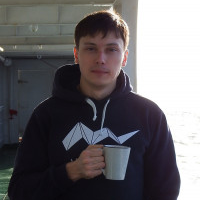Seawater Bio-Optical Characteristics from Satellite Ocean Color Data II
A special issue of Remote Sensing (ISSN 2072-4292). This special issue belongs to the section "Ocean Remote Sensing".
Deadline for manuscript submissions: closed (15 February 2024) | Viewed by 7954
Special Issue Editor
Interests: ocean optics; satellite ocean color; seawater fluorescence; absorption coefficient; dissolved organic matter; chlorophyll; arctic seas; surface layer
Special Issues, Collections and Topics in MDPI journals
Special Issue Information
Dear Colleagues,
Satellite ocean color data make it possible to track changes in the state of marine ecosystems effectively and quickly. The values of seawater bio-optical characteristics, obtained as a result of processing these data, depend on the quantitative and qualitative composition of the dissolved and suspended matter. This composition is extremely variable and diverse: suspended particles carried into the sea by rivers and wind, colored organic matter, phytoplankton, bacteria and detritus. The content and variability of these seawater components, obtained from the satellite ocean color data, allow us to quickly assess the state of the ecosystem and monitor water areas on a wide spatial and temporal scale.
This Special Issue is a continuation of the first part, which was successfully completed in November 2022. It also aims at presenting the results of studies on seawater bio-optical characteristics from satellite ocean color data. An important section in this area is the development and improvement of regional satellite algorithms that take into account the characteristics of specific water areas and allow us to obtain more accurate values of bio-optical characteristics compared to standard algorithms.
The authors consider various aspects of the seawater bio-optical properties: spectral, angular, and polarization characteristics, relation to the absolute content and composition of the seawater optically active components, the inverse problems, the spatial and temporal variability of the characteristics, including both the inherent and apparent ones (for example, the diffuse attenuation coefficient). The modeling and measured results are welcomed; the presentation of new ideas and their realization, particularly applications for the investigation and monitoring of the ocean and seas are encouraged. The particular topics of interest include, but are not limited with:
- Development and application of regional algorithms for retrieval of the seawater bio-optical characteristics from satellite ocean color data;
- Results of processing, analysis and application of the data from the multisensor data sets;
- Modeling of the seawater bio-optical characteristics and their components;
- Inverse problems in application to the bio-optical characteristics of seawater
- Bio-optical characteristics of the arctic waters;
- Variability of the seawater optical characteristics depending on the hydro-physical processes.
Original papers and thematic reviews are accepted.
Dr. Dmitry Glukhovets
Guest Editor
Manuscript Submission Information
Manuscripts should be submitted online at www.mdpi.com by registering and logging in to this website. Once you are registered, click here to go to the submission form. Manuscripts can be submitted until the deadline. All submissions that pass pre-check are peer-reviewed. Accepted papers will be published continuously in the journal (as soon as accepted) and will be listed together on the special issue website. Research articles, review articles as well as short communications are invited. For planned papers, a title and short abstract (about 100 words) can be sent to the Editorial Office for announcement on this website.
Submitted manuscripts should not have been published previously, nor be under consideration for publication elsewhere (except conference proceedings papers). All manuscripts are thoroughly refereed through a single-blind peer-review process. A guide for authors and other relevant information for submission of manuscripts is available on the Instructions for Authors page. Remote Sensing is an international peer-reviewed open access semimonthly journal published by MDPI.
Please visit the Instructions for Authors page before submitting a manuscript. The Article Processing Charge (APC) for publication in this open access journal is 2700 CHF (Swiss Francs). Submitted papers should be well formatted and use good English. Authors may use MDPI's English editing service prior to publication or during author revisions.
Keywords
- seawater bio-optical characteristics
- satellite ocean color data
- regional algorithms
- multi-sensor data sets
- new approaches, methods and algorithms
- new data on variability including polar regions





